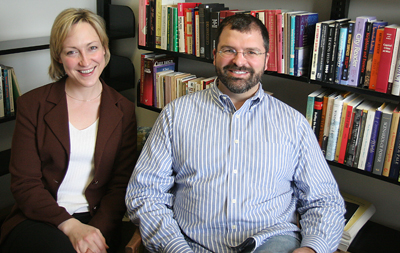
A new course being taught in the fall semester is designed to break the ice between the two views of Cold War history, as two professors prepare to implement a revolutionary teaching strategy.
Professors Heather DeHaan and John Stoner will share teaching duties of Hist 386A, The Cold War: US/Soviet Views ‘ a groundbreaking course that alternates two perspectives in lectures throughout the semester.
‘It’s exciting because it’s an opportunity not only to present a more well-rounded Cold War but also to interact and learn more about the different dynamics,’ said DeHaan, a Russian historian who has been teaching at Binghamton University since fall 2005.
Developed by both Dehaan and Stoner, an American historian, the class has been in the works for several years.
‘I was very excited when Professor Dehaan joined the faculty,’ Stoner said of his colleague. ‘This is a course I had been thinking about, and I thought it would be wonderful, and thankfully she agreed with me.’
Stoner and Dehaan are not only excited about being able to show students a new, mixed perspective of the Cold War, but also to be able to learn more about the Cold War from each other.
‘One of the reasons why I’m so excited about this course is because I’m looking forward to learning a lot about the Russian and Soviet perspective and experience,’ Stoner said. ‘It will give us an opportunity to get a more balanced picture and likely a more accurate picture.’
‘It’s ridiculous to talk about the Cold War specifically from just one side,’ he added.
Class lectures ‘ which meet twice a week ‘ will be split between the two perspectives. The American view will be taught by Stoner on one day, and the Soviet by Dehaan the next. Discussion sections, which will also be led by one of the professors, will tie the two views together.
‘This is a fantastic learning opportunity for both students and professors and it’s an experiment,’ Dehaan added. ‘Because you don’t have a single perspective or a single professor shaping the material, I think it will be exciting.’
The class can fulfill an upper level requirement, a W for a writing requirement, and also a G or an N for general education requirements.


